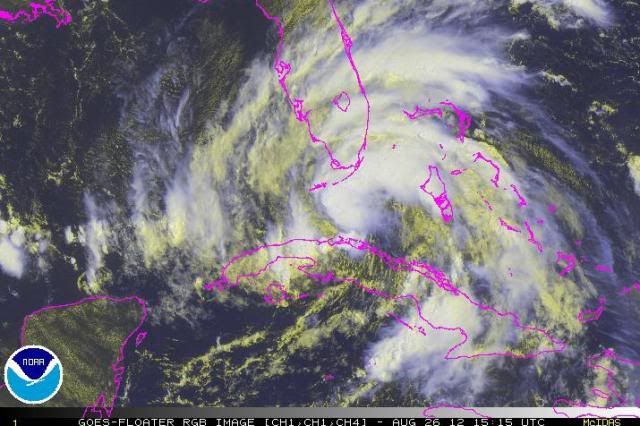mahi1720 wrote:Give it a few hrs. and you're gonna see an eyewall. It's about to bomb out. This reminds me of Charley.
What evidence do you have to support your prediction?
Moderator: S2k Moderators

mahi1720 wrote:Give it a few hrs. and you're gonna see an eyewall. It's about to bomb out. This reminds me of Charley.

Aric Dunn wrote:rainstorm wrote:bella_may wrote:I don't think that's the center you guys are seeing drift west. The center is east of there
its not a good sign when no one can figure out where the center is.
we know exactly where the center is... recon just passed through it

HurricaneBrain wrote:Isaac's about to explode.
N2FSU wrote:Question for someone smarter than me: would a slower motion make it more or less likely that it makes the connection with the trough which is moving towards the southeast? I can't figure out if the GFS is sticking to a further west solution because Isaac gets to the coast too fast before the trough gets very far east, or does the trough simply not dig far enough south to catch it? If it's a matter of the first, then I would think it slowing and waiting on the trough, so to speak, would make it more likely to follow more of the Euro, CMC, NAM solutions.


N2FSU wrote:Question for someone smarter than me: would a slower motion make it more or less likely that it makes the connection with the trough which is moving towards the southeast? I can't figure out if the GFS is sticking to a further west solution because Isaac gets to the coast too fast before the trough gets very far east, or does the trough simply not dig far enough south to catch it? If it's a matter of the first, then I would think it slowing and waiting on the trough, so to speak, would make it more likely to follow more of the Euro, CMC, NAM solutions.

Nederlander wrote:catskillfire51 wrote:I've been following this site since the Coast Guard stationed me down here in texas last year. It really is great information. I was trying to google some stuff I was reading on the discussion and I came across this. Hurricane isaac in 1900. I know Isaac is not forcasted to come to texas. Would be interesting if two Isaacs came close to the same landfall, both with the same forcasted category 4's. Sorry this isn't exactly related. Best wishes to anyone involved.
http://en.wikipedia.org/wiki/File:1900_ ... _track.png
Well technically the 1900 storm wasn't "Hurricane Isaac". Storms weren't named back then. It has been since nicknamed Isaac's storm after meteorologist Isaac Cline. But facts aside, I do see your point.
bella_may wrote:N2FSU wrote:Question for someone smarter than me: would a slower motion make it more or less likely that it makes the connection with the trough which is moving towards the southeast? I can't figure out if the GFS is sticking to a further west solution because Isaac gets to the coast too fast before the trough gets very far east, or does the trough simply not dig far enough south to catch it? If it's a matter of the first, then I would think it slowing and waiting on the trough, so to speak, would make it more likely to follow more of the Euro, CMC, NAM solutions.
I would say more likely because the slower it moves the faster the trough can send it north/NE. I'm not a professional though.

WilmingtonSandbar wrote:mahi1720 wrote:Give it a few hrs. and you're gonna see an eyewall. It's about to bomb out. This reminds me of Charley.
What evidence do you have to support your prediction?
WilmingtonSandbar wrote:
This was posted way back towards the beginning of this thread. It is a documentary about Isaac's storm, or the 1900 Galveston Hurricane. I found it interesting and informative. Glad we have come so far since then.
http://www.youtube.com/watch?v=5uz2GvDJHMg




Aric Dunn wrote:very well could be that the upper/mid level low near the Yucatan is casue some mid level shear that is pushing the mid level vort to the ne which would cause the low level center to reform with it. I say that because there is some strong mid level rotation seen on radar withing the higher reflectivity.

stormhunter7 wrote:Aric Dunn wrote:very well could be that the upper/mid level low near the Yucatan is casue some mid level shear that is pushing the mid level vort to the ne which would cause the low level center to reform with it. I say that because there is some strong mid level rotation seen on radar withing the higher reflectivity.
agree, 100%Mid level rotation is clearly seen on key west doppler... and its not moving that much, which i think is causing the huge blowup of convection. Mid level to me is about 20 miles wsw of the dry tortugas?
Users browsing this forum: No registered users and 61 guests